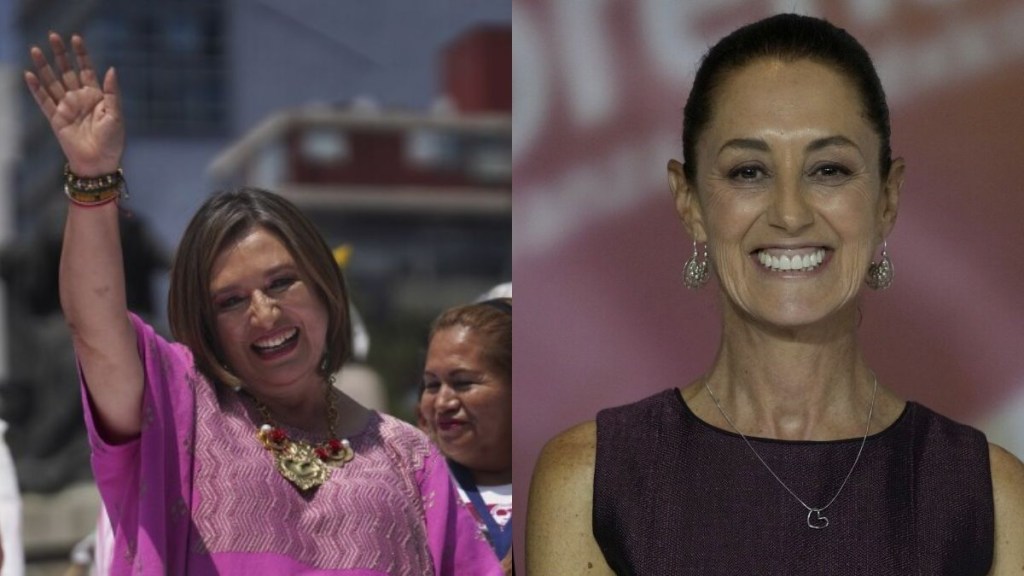By Dr Aparaajita Pandey
June 2024 is when Mexico would hold its presidential elections. The race that began with a galley of hopeful candidates has now been reduced to just two unless there is a seismic shift, the final race being between these two candidates is set in stone. The reason these preliminaries have gained such importance is not just for the obvious reason of them being intricately significant to the future Mexican President but also because this time, both final candidates for the post of Mexico’s Presidential post are women. Claudia Sheinbaum on one hand who has formerly been a mayor of the capital, Mexico City, is hand picked by the current President to be his successor and belongs to the left of centre Morena party. The other candidate is an engineer and an entrepreneur and has roots in the indigenous communities of Mexico, Xochitl Galvez is already a sitting senator and enjoys support among the Mexican working class.
While in an ideal – utopian world, one would be focusing on the manifestos, campaign promises, political rhetoric, and past political experiences of these candidates; our realities mandate that the world must also evaluate the journey that they have taken to be two presidential candidates and what does this signify for women of Mexico. The bicameral legislature of Mexico is constituted of its 628 members and since 2014 it has been mandated that 50 per cent of all members must be women. While gender equality is not a linear equation solved through quotas, one can make a definitive judgement that a strict quota for women does make their entry into politics and further upward movement into positions of power relatively easier than having no quotas to facilitate such a journey for minority groups who are not traditionally perceived as suitable for a profession like politics. Mexico gave voting rights to women in 1953 which is about two decades later than the US, with this yard stick one can say that Mexico has come a long way in the context of representation and participation of women in politics. It stands tied with New Zealand in fourth place for percentage of women in legislatures. The country also appointed its first female Supreme Court Chief Justice.
Mexico has taken a long and arduous journey to reach where they are. It began in 1996 with a recommendation for a 30 per cent quota for women in the parliament, the resolution was passed in 2002. In 2008 this quota was increased to 40 per cent and then to 50 per cent subsequently in 2014 this quota was increased to 50 per cent. In 2019 Mexico saw the same quota being applied to the judicial, executive, and legislative branches of the government in a multi- tier fashion. It was implemented at various levels of the government so as to maximise maintain gender parity. Such an implementation is of great importance as it integrates with the system which with enough time would also translate to the social capital that women would have in society. The same logic was behind making women the primary receivers of the financial assistance that was given to families under the conditional cash transfer policy called Opportunidades.
While these are welcome changes and hopefully set the ball rolling for a society based on greater equality and opportunity; issues like crimes against women, femicide, and reproductive rights would have to be made a priority in the imminent future. It has often been seen around the world and especially in societies that see machismo as one of their defining characteristics that gender parity often gets relegated to tokenism. It has been hinted by some that this all women race to the President’s office could be labelled as ‘descriptive democracy’. Descriptive Democracy can be explained as visual representation of the voter base; a tool to fraternise with the voters instead to policy change directed at the betterment of society.
However, the two candidates have been vocal about raising issues regarding women. They are self-proclaimed feminists and have not shied away from gender issues. It would be interesting to see how Claudia Sheinbaum handles the issue of Femicide, an issue that has been shoved under the carpet by her mentor – AMLO. It is also imperative that whoever eventually becomes the President performs well as they would inadvertently be opening doors for women across the board.
It is uncertain which woman would be the future President of Mexico, but it is certain that the future President of Mexico will be a woman.
Author is an independent political analyst and has a PhD in Latin American Studies from Jawaharlal Nehru University.
Disclaimer: Views expressed are personal and do not reflect the official position or policy of Financial Express Online. Reproducing this content without permission is prohibited.

